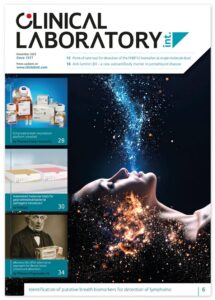Researchers find new gene mutations for Wilms Tumour
Researchers at UT Southwestern Medical Center and the Gill Center for Cancer and Blood Disorders at Children’s Medical Center, Dallas, have made significant progress in defining new genetic causes of Wilms tumor, a type of kidney cancer found only in children.
Wilms tumour is the most common childhood genitourinary tract cancer and the third most common solid tumour of childhood.
“While most children with Wilms tumour are thankfully cured, those with more aggressive tumours do poorly, and we are increasingly concerned about the long-term adverse side effects of chemotherapy in Wilms tumour patients. We wanted to know – what are the genetic causes of Wilms tumour in children and what are the opportunities for targeted therapies? To answer these questions, you have to identify genes that are mutated in the cancer,” said Dr. James Amatruda, Associate Professor of Pediatrics, Molecular Biology, and Internal Medicine at UT Southwestern and senior author for the study.
Collaborating with Dr. Amatruda on the study were UT Southwestern faculty members Dr. Dinesh Rakheja, Associate Professor of Pathology and Pediatrics; Dr. Kenneth S. Chen, Assistant Instructor in Pediatrics; and Dr. Joshua T. Mendell, Professor of Molecular Biology. Dr. Jonathan Wickiser, Associate Professor in Pediatrics, and Dr. James Malter, Chair of Pathology, are also co-authors.
Previous research has identified one or two mutant genes in Wilms tumours, but only about one-third of Wilms tumors had these mutations.
“We wanted to know what genes were mutated in the other two-thirds. To accomplish this goal, we sequenced the DNA of 44 tumours and identified several new mutated genes,” said Dr. Amatruda, who holds the Nearburg Family Professorship in Pediatric Oncology Research and is an Attending Physician in the Pauline Allen Gill Center for Cancer and Blood Disorders at Children’s Medical Center. “The new genes had not been identified before. The most common, and in some ways the most biologically interesting, mutations were found in genes called DROSHA and DICER1. We found that these mutations affected the cell’s production of microRNAs, which are tiny RNA molecules that play big roles in controlling the growth of cells, and the primary effect was on a family of microRNAs called let-7.”
“Let-7 is an important microRNA that slows cell growth and in Wilms tumours in which DROSHA or DICER1 were mutated, let-7 RNA is missing, which causes the cells to grow abnormally fast,” Dr. Amatruda said.
These findings have implications for future treatment of Wilms tumour and several other childhood cancers, including neuroblastoma, germ cell tumour, and rhabdomyosarcoma.
“What’s exciting about these results is that we can begin to understand what drives the growth of different types of Wilms tumours. This is a critical first step in trying to treat the cancer based on its true molecular defect, rather than just what a tumour looks like under a microscope,” Dr. Amatruda said. “Most importantly, we begin to think in concrete terms about a therapy, which is an exciting translational goal of our work in the next few years. UT Southwestern Medical Center



